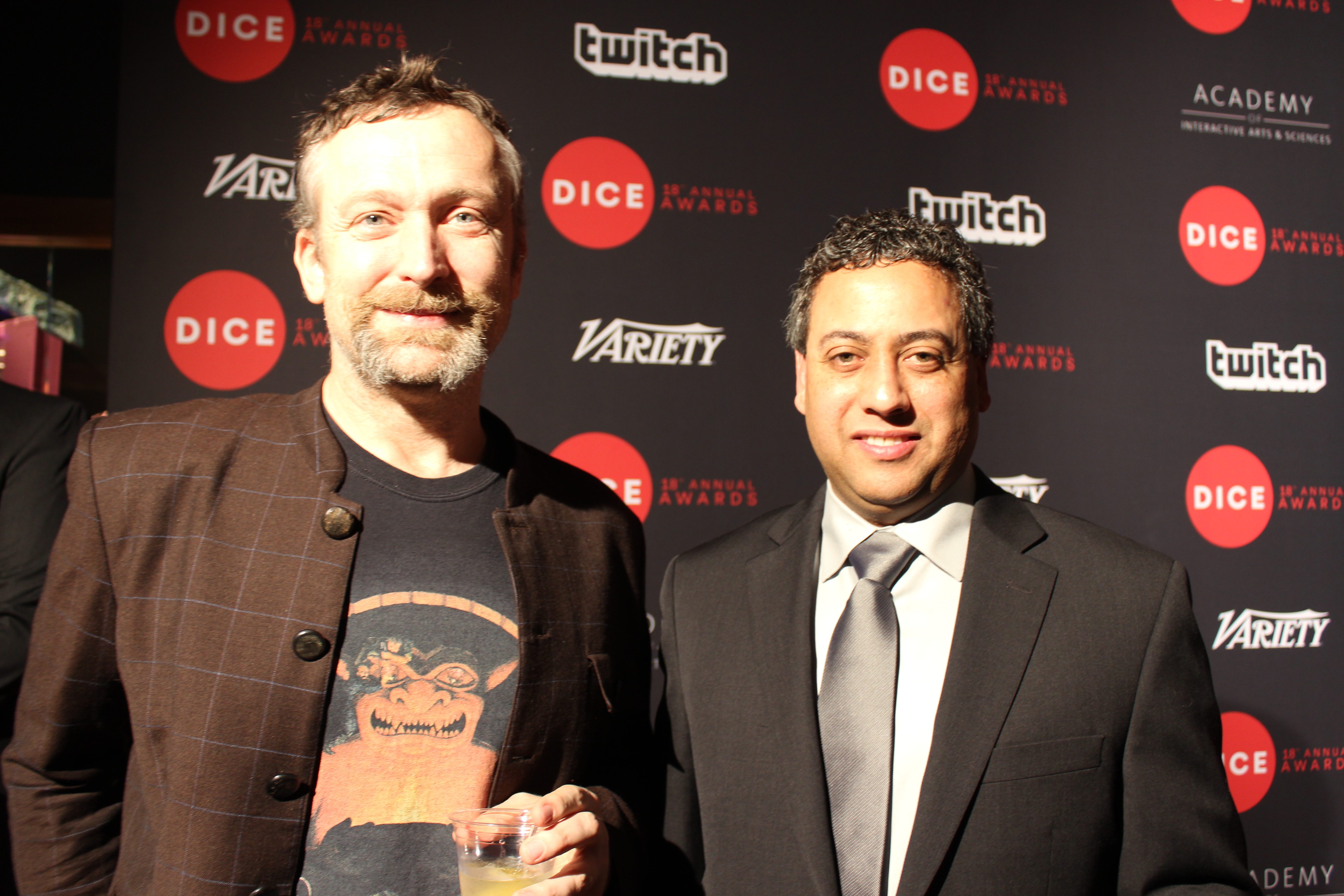The gameplay engine that powers Middle-earth: Shadow of Mordor draws from a kaleidoscopic mix of influences, with some pretty removed from Tolkien’s works.
Michael de Plater, creative director at Monolith Productions, shared how the company’s approach to game design allowed for gamers to create their own gameplay stories in his presentation at 2015 DICE Summit, an elite game-industry event that took place in Las Vegas last week.
GamesBeat managed to catch up with him following this presentation — and just hours before it went on to nearly sweep the 2015 DICE Awards, taking eight awards and one nomination, including an award for game design.
Monolith Productions developed the engine that runs Shadow of Mordor to bring something different to open-world games. This Nemesis system continually tracks players as they progress through the world. It adapts to the player’s actions and choices, remembering and reacting to them dynamically.
The system enables a unique approach to storytelling. It generates detail on key points and lets players’ minds fill in the gaps, equipping them with tools to spark their imaginations and letting them form their own stories between key enemy interactions. De Plater calls these points “anchors of gameplay,” and he explains that trying to fill in every single story point in a open-world game would have been impossible.
“It would be a necessity to find the peak kind of anchors for people to latch on to,” says de Plater. “We would have to find one of the peak moments at the top end that people are latching on to, because if you try to do all of it and kind of fill in all the cases in the middle, it would be so explosively complex that you couldn’t make it.”
To narrow down the work, the team at Monolith focused on listing events that players would care about and remember. They decided that being killed by an enemy would be an obvious choice for these anchors. This is why the Nemesis system focuses on the Orcs. It procedural generates completely unique enemies to the gameplay session, and then it uses tracking and dynamic choices to give these foes their own background and story with the player. It makes for a game that feels like the enemies are out to get you specifically.
Inspiration for this system goes back to pen-and-paper role-playing games, says de Plater.
“You’re going to be fighting your way through lots of enemies,” he explained, speaking of role-playing game Dungeons & Dragons. “But occasionally, there will be one guy that survived, or one guy who had something that you can latch on to and remember about him. It’s about taking that guy and bringing him back as a recurring villain.”
The creative director also calls on his past experience as a developer at EA Sports to help build out Mordor’s storytelling methods. Recalling the way a Madden game’s commentary system would recount the career of a player helped him realize that the Nemesis system’s player-guided story-tracking would work. He says that following the player’s journey through Mordor is not unlike following a rookie sports player as he works through his career. Football teams also have a narrative as they move from season start to midseason and onto playoffs, he notes. De Plater says he wanted to put this all in an action-adventure game.
To give life to the enemies of Mordor, the Nemesis system tracks every battle to a fine level of detail, to the point that even battle scars are reflected on their faces and bodies. De Plater explains that the villains of Batman were an inspiration for this feature.
“Batman supervillains were a huge inspiration for us,” he says. “Whether it’s Two Face or Joker or, really, any of them — almost every batman villain has some sot of physical scar, and some sort of psychological scar, and some way of tracing those two things back to the hero.”


